Will Pfeifer's Blog, page 4
February 22, 2019
Movies I Watched in January, Part 2
The second chapter of the January recap, with a bunch of movies I've seen before and a great documentary I caught for the first time...
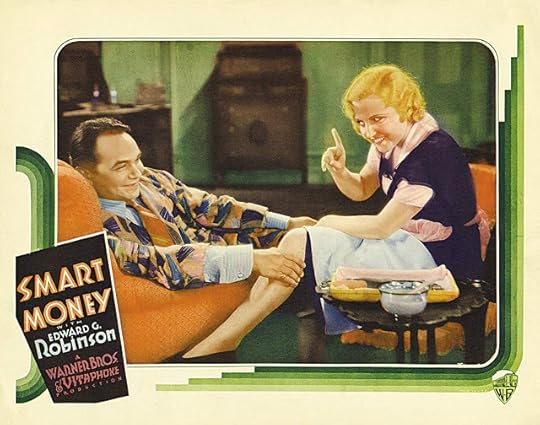
You’d think that, given their long careers, the fact that they both worked at Warner Bros. and their repeated roles as gangsters, Edward G. Robinson and Jimmy Cagney would’ve co-starred in many movies, but believe it or not, this 1931 gambling tale is the only time they shared the screen. Robinson stars, in fact, with Cagney lending support. (Robinson’s “Little Caesar” had opened in January, but Cagney’s “The Public Enemy” didn’t open until this movie had wrapped filming, so Robinson was still the bigger name on the marquee.) “Smart Money” is a classic example of Warner Brothers’ early pre-Code style, with the plot essentially a series of one thing happening after the other, then the movie just coming to an end, with the entire production an excuse for putting a charismatic performer onscreen. And Robinson is certainly charismatic here, playing a barber/gambler who works his way up the illegal gambling ladder, encountering various blondes – nefarious and otherwise – along the way. It’s a lot of fun, with none of the brutal edge that fueled “Little Caesar” (or, for that matter, “The Public Enemy”), but you do get a vintage dose of early ‘30s racism, with Robinson treating every African-American character like a good luck charm, rubbing their heads in an especially demeaning way. Not everything about the good ol’ days was good, you know.
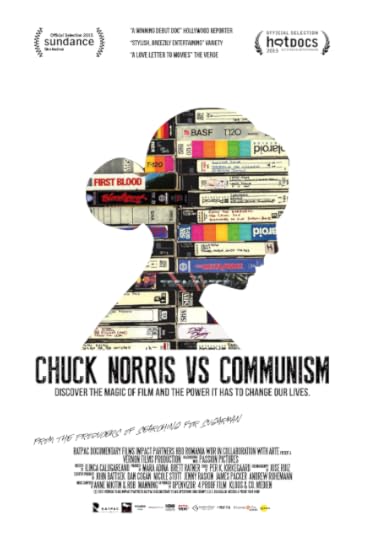 Fascinating (I know I use that word a lot, but I really mean it this time) documentary about how bootleg VHS tapes helped bring about the fall of Romanian dictator Nikolai Ceausesu. No kidding. Using movie clips, onscreen interviews and some surprisingly well-filmed recreations, writer/director Ilinca Calugareanu takes us back to those grim days of the 1980s when the Berlin Wall was still standing and life was so grim in places like Romania that mediocre mainstream American movies were received like manna from heaven. Families would buy tapes and VCRs on the sly, then rearrange their brutalist apartment living rooms in movie theater fashion and invite everyone over. With nothing but state-run programming normally available on their sets, films starring Norris, Stallone and Van Damme were more than entertaining -- they were reassurances that a world of freedom and excess did indeed exist outside their country's borders. And, slowly but surely, these visions of big cars, colorful clothes and loud mouths inspired them to drive their cruel rulers from office, try them for their crimes and shoot them in cold blood. On Christmas Day. Talk about an '80s movie ending. One of the best things about "Chuck Norris Vs. Communism" is that it doesn't just tell that story -- it tells several stories, large and small, all about people living in desperate circumstances who dream of -- and sometimes manage to carve out -- something better. There's a lot of talk about how everyone fell in love with the unseen woman who dubbed the films (all voices, off the cuff), and then we eventually meet Irina Nistor in person (after seeing her played in re-enactments as younger woman), and you know what? She's still pretty damned cool. Then there's Zamfir, the charismatic smuggler who made this all possible, bringing hundreds (thousands?) of VCRs into the country and duping all those tapes. His business was so booming that top government officials protected his business because, after all, they wanted to keep watching those American movies, too. The title "Chuck Norris Vs. Communism" promises some sort of goofy romp, but that's not what this movie is at all. Sure, it's funny in spots, but it's also touching, surprising and even inspiring. And it's on Netflix right now. Watch it already.
Fascinating (I know I use that word a lot, but I really mean it this time) documentary about how bootleg VHS tapes helped bring about the fall of Romanian dictator Nikolai Ceausesu. No kidding. Using movie clips, onscreen interviews and some surprisingly well-filmed recreations, writer/director Ilinca Calugareanu takes us back to those grim days of the 1980s when the Berlin Wall was still standing and life was so grim in places like Romania that mediocre mainstream American movies were received like manna from heaven. Families would buy tapes and VCRs on the sly, then rearrange their brutalist apartment living rooms in movie theater fashion and invite everyone over. With nothing but state-run programming normally available on their sets, films starring Norris, Stallone and Van Damme were more than entertaining -- they were reassurances that a world of freedom and excess did indeed exist outside their country's borders. And, slowly but surely, these visions of big cars, colorful clothes and loud mouths inspired them to drive their cruel rulers from office, try them for their crimes and shoot them in cold blood. On Christmas Day. Talk about an '80s movie ending. One of the best things about "Chuck Norris Vs. Communism" is that it doesn't just tell that story -- it tells several stories, large and small, all about people living in desperate circumstances who dream of -- and sometimes manage to carve out -- something better. There's a lot of talk about how everyone fell in love with the unseen woman who dubbed the films (all voices, off the cuff), and then we eventually meet Irina Nistor in person (after seeing her played in re-enactments as younger woman), and you know what? She's still pretty damned cool. Then there's Zamfir, the charismatic smuggler who made this all possible, bringing hundreds (thousands?) of VCRs into the country and duping all those tapes. His business was so booming that top government officials protected his business because, after all, they wanted to keep watching those American movies, too. The title "Chuck Norris Vs. Communism" promises some sort of goofy romp, but that's not what this movie is at all. Sure, it's funny in spots, but it's also touching, surprising and even inspiring. And it's on Netflix right now. Watch it already.
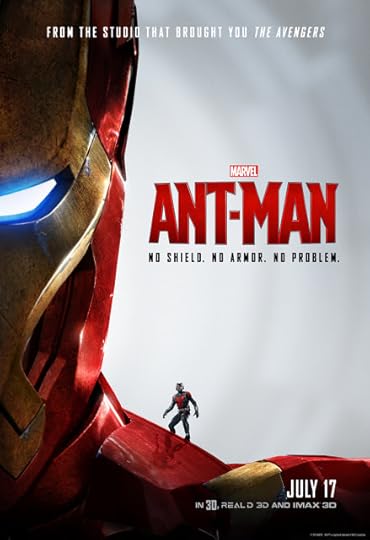
Another one of Allie's favorites, which explains why it's constantly showing up on this blog. (Back before I started these monthly recaps, she was a much younger girl, and movies like "Finding Nemo" and "Cars" were in heavy rotation.) I still like "Ant-Man" quite a bit, finding it to be one of the more purely entertaining movies in the Marvel Universe. And I especially like the fact that the entire fate of that universe is not hanging in the balance. Sometimes, a small story is just what's needed.Having the climactic battle taking place on a Thomas the Tank Engine train set is no coincidence --it's more like a statement of purpose.
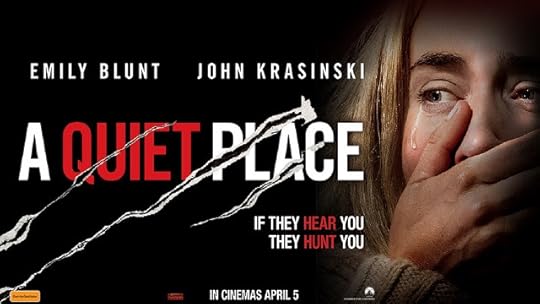
Not much else to say (har har) about this one. I've reviewed it before and liked it quite a bit. This time around, we showed it to the aforementioned Allie, trying to develop an appreciation for horror movies in her by starting out with ones that aren't too terribly horrifying. She liked it too, in large part because it stars Rita from "Edge of Tomorrow" and Jim from "The Office."
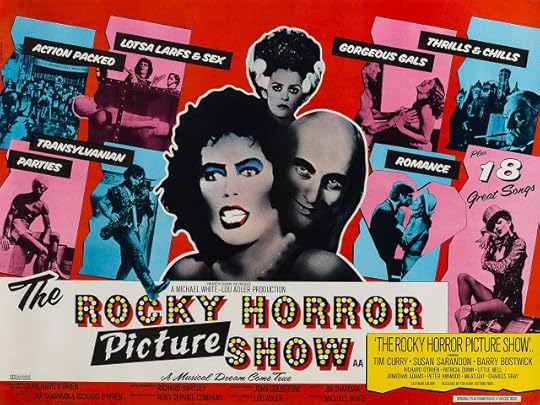
Another horror movie (well, the word "horror" is in the title) that we showed the kid because we figured, hell, she's old enough. I grew up in an era when this movie was simply not available for home viewing -- even when videotape was common in the 1980s and early 1990s, "The Rocky Horror Picture Show" didn't get a release, with everyone figuring it was something best experienced with a crowd at midnight, where toast and toiler paper was sailing through the air. That's not wrong -- it's still the sort of movie that works best in a theatrical setting with an enthusiastic audience -- but I've always liked it purely as a movie, too, enjoying its combination of sex, catchy songs and heavy dose of nerdy pop culture. Plus, let's be honest here: Tim Curry gives a performance for the ages here. Jack Nicholson won the Oscar that year for "One Flew Over the Cuckoo's Nest," and he's great, there's no denying that, but Curry is so good, so energetic and so iconic that I'd argue he deserved the statue -- even though, of course, he didn't come within miles of a nomination.
Up next: A Mamet thriller, a journalism doc, a Spencer Tracy political fable and a movie that scared the hell out of my daughter.

You’d think that, given their long careers, the fact that they both worked at Warner Bros. and their repeated roles as gangsters, Edward G. Robinson and Jimmy Cagney would’ve co-starred in many movies, but believe it or not, this 1931 gambling tale is the only time they shared the screen. Robinson stars, in fact, with Cagney lending support. (Robinson’s “Little Caesar” had opened in January, but Cagney’s “The Public Enemy” didn’t open until this movie had wrapped filming, so Robinson was still the bigger name on the marquee.) “Smart Money” is a classic example of Warner Brothers’ early pre-Code style, with the plot essentially a series of one thing happening after the other, then the movie just coming to an end, with the entire production an excuse for putting a charismatic performer onscreen. And Robinson is certainly charismatic here, playing a barber/gambler who works his way up the illegal gambling ladder, encountering various blondes – nefarious and otherwise – along the way. It’s a lot of fun, with none of the brutal edge that fueled “Little Caesar” (or, for that matter, “The Public Enemy”), but you do get a vintage dose of early ‘30s racism, with Robinson treating every African-American character like a good luck charm, rubbing their heads in an especially demeaning way. Not everything about the good ol’ days was good, you know.
 Fascinating (I know I use that word a lot, but I really mean it this time) documentary about how bootleg VHS tapes helped bring about the fall of Romanian dictator Nikolai Ceausesu. No kidding. Using movie clips, onscreen interviews and some surprisingly well-filmed recreations, writer/director Ilinca Calugareanu takes us back to those grim days of the 1980s when the Berlin Wall was still standing and life was so grim in places like Romania that mediocre mainstream American movies were received like manna from heaven. Families would buy tapes and VCRs on the sly, then rearrange their brutalist apartment living rooms in movie theater fashion and invite everyone over. With nothing but state-run programming normally available on their sets, films starring Norris, Stallone and Van Damme were more than entertaining -- they were reassurances that a world of freedom and excess did indeed exist outside their country's borders. And, slowly but surely, these visions of big cars, colorful clothes and loud mouths inspired them to drive their cruel rulers from office, try them for their crimes and shoot them in cold blood. On Christmas Day. Talk about an '80s movie ending. One of the best things about "Chuck Norris Vs. Communism" is that it doesn't just tell that story -- it tells several stories, large and small, all about people living in desperate circumstances who dream of -- and sometimes manage to carve out -- something better. There's a lot of talk about how everyone fell in love with the unseen woman who dubbed the films (all voices, off the cuff), and then we eventually meet Irina Nistor in person (after seeing her played in re-enactments as younger woman), and you know what? She's still pretty damned cool. Then there's Zamfir, the charismatic smuggler who made this all possible, bringing hundreds (thousands?) of VCRs into the country and duping all those tapes. His business was so booming that top government officials protected his business because, after all, they wanted to keep watching those American movies, too. The title "Chuck Norris Vs. Communism" promises some sort of goofy romp, but that's not what this movie is at all. Sure, it's funny in spots, but it's also touching, surprising and even inspiring. And it's on Netflix right now. Watch it already.
Fascinating (I know I use that word a lot, but I really mean it this time) documentary about how bootleg VHS tapes helped bring about the fall of Romanian dictator Nikolai Ceausesu. No kidding. Using movie clips, onscreen interviews and some surprisingly well-filmed recreations, writer/director Ilinca Calugareanu takes us back to those grim days of the 1980s when the Berlin Wall was still standing and life was so grim in places like Romania that mediocre mainstream American movies were received like manna from heaven. Families would buy tapes and VCRs on the sly, then rearrange their brutalist apartment living rooms in movie theater fashion and invite everyone over. With nothing but state-run programming normally available on their sets, films starring Norris, Stallone and Van Damme were more than entertaining -- they were reassurances that a world of freedom and excess did indeed exist outside their country's borders. And, slowly but surely, these visions of big cars, colorful clothes and loud mouths inspired them to drive their cruel rulers from office, try them for their crimes and shoot them in cold blood. On Christmas Day. Talk about an '80s movie ending. One of the best things about "Chuck Norris Vs. Communism" is that it doesn't just tell that story -- it tells several stories, large and small, all about people living in desperate circumstances who dream of -- and sometimes manage to carve out -- something better. There's a lot of talk about how everyone fell in love with the unseen woman who dubbed the films (all voices, off the cuff), and then we eventually meet Irina Nistor in person (after seeing her played in re-enactments as younger woman), and you know what? She's still pretty damned cool. Then there's Zamfir, the charismatic smuggler who made this all possible, bringing hundreds (thousands?) of VCRs into the country and duping all those tapes. His business was so booming that top government officials protected his business because, after all, they wanted to keep watching those American movies, too. The title "Chuck Norris Vs. Communism" promises some sort of goofy romp, but that's not what this movie is at all. Sure, it's funny in spots, but it's also touching, surprising and even inspiring. And it's on Netflix right now. Watch it already.
Another one of Allie's favorites, which explains why it's constantly showing up on this blog. (Back before I started these monthly recaps, she was a much younger girl, and movies like "Finding Nemo" and "Cars" were in heavy rotation.) I still like "Ant-Man" quite a bit, finding it to be one of the more purely entertaining movies in the Marvel Universe. And I especially like the fact that the entire fate of that universe is not hanging in the balance. Sometimes, a small story is just what's needed.Having the climactic battle taking place on a Thomas the Tank Engine train set is no coincidence --it's more like a statement of purpose.

Not much else to say (har har) about this one. I've reviewed it before and liked it quite a bit. This time around, we showed it to the aforementioned Allie, trying to develop an appreciation for horror movies in her by starting out with ones that aren't too terribly horrifying. She liked it too, in large part because it stars Rita from "Edge of Tomorrow" and Jim from "The Office."

Another horror movie (well, the word "horror" is in the title) that we showed the kid because we figured, hell, she's old enough. I grew up in an era when this movie was simply not available for home viewing -- even when videotape was common in the 1980s and early 1990s, "The Rocky Horror Picture Show" didn't get a release, with everyone figuring it was something best experienced with a crowd at midnight, where toast and toiler paper was sailing through the air. That's not wrong -- it's still the sort of movie that works best in a theatrical setting with an enthusiastic audience -- but I've always liked it purely as a movie, too, enjoying its combination of sex, catchy songs and heavy dose of nerdy pop culture. Plus, let's be honest here: Tim Curry gives a performance for the ages here. Jack Nicholson won the Oscar that year for "One Flew Over the Cuckoo's Nest," and he's great, there's no denying that, but Curry is so good, so energetic and so iconic that I'd argue he deserved the statue -- even though, of course, he didn't come within miles of a nomination.
Up next: A Mamet thriller, a journalism doc, a Spencer Tracy political fable and a movie that scared the hell out of my daughter.
Published on February 22, 2019 10:59
February 19, 2019
Movies I Watched In January, Part 1
Another year, another almost-last-minute recap of the first month's movies.
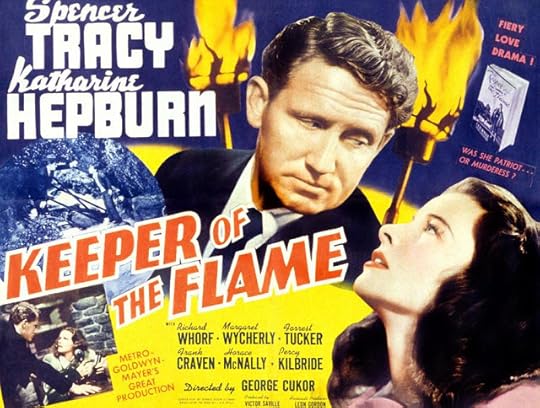
Spencer Tracy, smack-dab in the middle of his schlub with integrity phase, investigates the life of a beloved philanthropist who died in a car accident, only to discover that, no surprise, he was a secret fascist. The title character in this 1942 George Cukor drama is, also no surprise, Katharine Hepburn. I’m a huge fan of old movies, as you might have guessed from this blog, but I’ve come to the realization that I’m not a fan of Ms. Hepburn. I know she’s beloved and revered in many corners, but I find her performances all to be hitting the same, annoying note – and hitting it repeatedly. There’s so much ACTING involved in her acting that I’ve never, ever bought her as any character except for Ms. Katharine Hepburn, and that goes double for the noble suffering she delivers in this movie. In other words, she's no Stanwyck. Sorry, Kate.
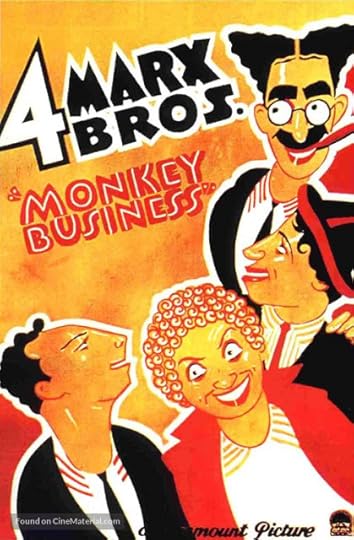
Yes, again, and yes because Allie wanted to watch it. And it’s still hilarious. This time around, I had my copy of “The Annotated Marx Brothers”at my side, and picked up this little bit of movie lore: During the scene when the four brothers disembark from the boat, there’s a snappy looking older gentleman waving to the camera. That man is none other than the Marx Father, Sam “Frenchie” Marx, making what I think is his only film appearance.

Slick as hell and entertaining, too, though I’m not quite sure what it all adds up to. Still, when you’ve got Charlize Theron in full kick-ass mode, James McAvoy hamming it up hilariously and the always brilliant John Goodman lending his standard solid support, there’s no reason to complain. It all looks spectacular (credit to David Leitch and cinematographer Jonathan Sela), and I really enjoyed the fact that the whole thing takes place as the Berlin Wall is starting to crumble. In the end, I think it tried to be a little bit more clever than it actually it, with probably one twist too many, but along the way the fight scenes are so entertaining (Theron obviously worked her ass off) and the setting and mood are so much fun I barely noticed. Way better than I thought it would be, and probably a lot better than it ever had to be to boot. Check it out, comrades.
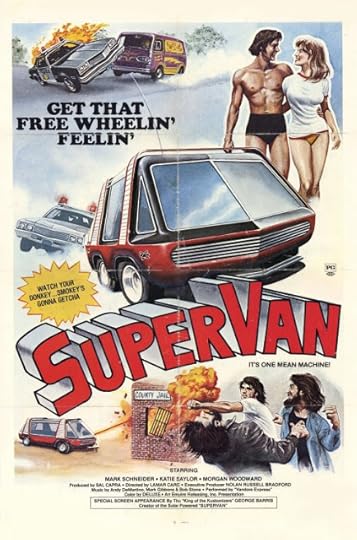
Not a great (or even good) movie by any means, but a fascinating cultural artifact straight from the heart of 1977. Mark Schneider (who?) plays a guy planning to drive his van, “The Sea Witch” to the “Invitational Freak Out,” a “van-in” taking place in Missouri. Along the way, however, he saves a rich runaway (Katie Saylor – who?) from some bikers, but his van gets crushed in a car compactor (!), so he ends up borrowing the experimental titular solar-powered van from his rebellious auto designer friend (!) and heads off to the van-in, little suspecting that the hitchhiker he saved is actually the daughter of the owner of the all-powerful Mid-American Motors company(!), who rejected Supervan because it was, I dunno, solar-powered? That plot, by the way, is just an excuse to get us to the Invitational Freak Out, which is worth the trip, believe you me. A sleazy, drunken Woodstock for gearheads, it’s got everything you’d want in a ‘70s no-budget movie: boozing, pot smoking, PG-rated wet T-shirt contests (with a cameo from, of all people, author Charles Bukowski!), scruffy kids running rampant, bell-bottoms, bikers, swingers and innocent bystanders captured on film so that I, who was 10 years old in 1977, could gawk at their oddball authenticity 42 years later. God bless America.
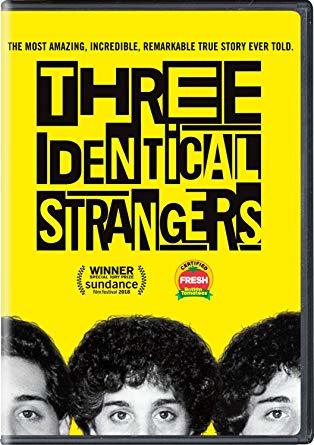
Intriguing documentary about three guys who, in 1980, discovered to their understandable astonishment that they were, in fact, identical triplets. Because they were quite the media sensation in a media-mad decade, there’s a ton of footage of them on Phil Donahue and other shows, usually answering the same banal questions (“Do you all have the same taste in women? Do you all smoke the same brand of cigarettes?”) Early on, viewers will sense all is not as happy as it appears given that only two of the triplets are included in the current-day interview segments, and rest assured, the story is even more ominous than that. I won’t spoil things here, but suffice to say that the fact that three identical triplets were adopted out – separately – to three very demographically different families was no coincidence. It’s been playing nearly nonstop on CNN, and it’s available on DVD and Blu-ray, so you’ve got no excuse for not checking it out.
Up next: Cagney and Robinson in their only movie together, Chuck Norris fights Communism (for real) and a couple of movies I've already reviewed in this space.

Spencer Tracy, smack-dab in the middle of his schlub with integrity phase, investigates the life of a beloved philanthropist who died in a car accident, only to discover that, no surprise, he was a secret fascist. The title character in this 1942 George Cukor drama is, also no surprise, Katharine Hepburn. I’m a huge fan of old movies, as you might have guessed from this blog, but I’ve come to the realization that I’m not a fan of Ms. Hepburn. I know she’s beloved and revered in many corners, but I find her performances all to be hitting the same, annoying note – and hitting it repeatedly. There’s so much ACTING involved in her acting that I’ve never, ever bought her as any character except for Ms. Katharine Hepburn, and that goes double for the noble suffering she delivers in this movie. In other words, she's no Stanwyck. Sorry, Kate.

Yes, again, and yes because Allie wanted to watch it. And it’s still hilarious. This time around, I had my copy of “The Annotated Marx Brothers”at my side, and picked up this little bit of movie lore: During the scene when the four brothers disembark from the boat, there’s a snappy looking older gentleman waving to the camera. That man is none other than the Marx Father, Sam “Frenchie” Marx, making what I think is his only film appearance.

Slick as hell and entertaining, too, though I’m not quite sure what it all adds up to. Still, when you’ve got Charlize Theron in full kick-ass mode, James McAvoy hamming it up hilariously and the always brilliant John Goodman lending his standard solid support, there’s no reason to complain. It all looks spectacular (credit to David Leitch and cinematographer Jonathan Sela), and I really enjoyed the fact that the whole thing takes place as the Berlin Wall is starting to crumble. In the end, I think it tried to be a little bit more clever than it actually it, with probably one twist too many, but along the way the fight scenes are so entertaining (Theron obviously worked her ass off) and the setting and mood are so much fun I barely noticed. Way better than I thought it would be, and probably a lot better than it ever had to be to boot. Check it out, comrades.

Not a great (or even good) movie by any means, but a fascinating cultural artifact straight from the heart of 1977. Mark Schneider (who?) plays a guy planning to drive his van, “The Sea Witch” to the “Invitational Freak Out,” a “van-in” taking place in Missouri. Along the way, however, he saves a rich runaway (Katie Saylor – who?) from some bikers, but his van gets crushed in a car compactor (!), so he ends up borrowing the experimental titular solar-powered van from his rebellious auto designer friend (!) and heads off to the van-in, little suspecting that the hitchhiker he saved is actually the daughter of the owner of the all-powerful Mid-American Motors company(!), who rejected Supervan because it was, I dunno, solar-powered? That plot, by the way, is just an excuse to get us to the Invitational Freak Out, which is worth the trip, believe you me. A sleazy, drunken Woodstock for gearheads, it’s got everything you’d want in a ‘70s no-budget movie: boozing, pot smoking, PG-rated wet T-shirt contests (with a cameo from, of all people, author Charles Bukowski!), scruffy kids running rampant, bell-bottoms, bikers, swingers and innocent bystanders captured on film so that I, who was 10 years old in 1977, could gawk at their oddball authenticity 42 years later. God bless America.

Intriguing documentary about three guys who, in 1980, discovered to their understandable astonishment that they were, in fact, identical triplets. Because they were quite the media sensation in a media-mad decade, there’s a ton of footage of them on Phil Donahue and other shows, usually answering the same banal questions (“Do you all have the same taste in women? Do you all smoke the same brand of cigarettes?”) Early on, viewers will sense all is not as happy as it appears given that only two of the triplets are included in the current-day interview segments, and rest assured, the story is even more ominous than that. I won’t spoil things here, but suffice to say that the fact that three identical triplets were adopted out – separately – to three very demographically different families was no coincidence. It’s been playing nearly nonstop on CNN, and it’s available on DVD and Blu-ray, so you’ve got no excuse for not checking it out.
Up next: Cagney and Robinson in their only movie together, Chuck Norris fights Communism (for real) and a couple of movies I've already reviewed in this space.
Published on February 19, 2019 03:50
January 30, 2019
Movies I Watched in December, Part 3
As always, here's the final chapter of the December Recap Trilogy, posted at the last-minute and delivered in a typically half-assed manner.
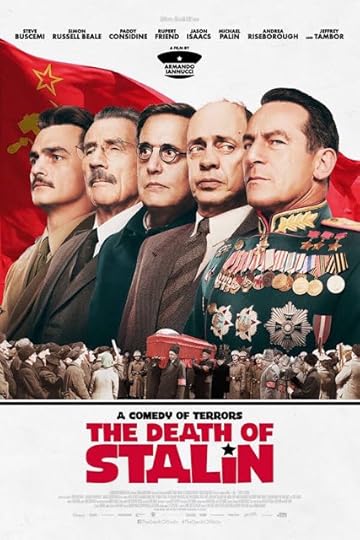
Since it earned a much-coveted spot on my Best of the Year list, it's obviously a movie I love, and quite probably my favorite film of the year. It's funny, it's suspenseful, it's wonderfully acted by a top-notch cast and, most especially, it's insanely dark -- probably the darkest political satire since "Dr. Strangelove," a movie that managed to kill off most of the population of the planet, but did it off camera. "The Death of Stalin," by contrast, murders its victims on camera, often right before, right after, or even during a joke, which makes it grimly funny -- but grim, nonetheless.
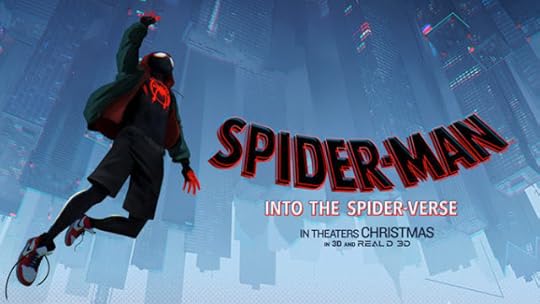
Another one on the Best of the Year list, though it's the polar opposite of "The Death of Stalin" (except that, oddly enough, both movies are based on comic books). It's a bright, bouncy, downright inspirational extravaganza that takes everything gloriously goofy about comic books and just runs with it. I've never seen a movie that manages to so perfectly capture the vibe of a comic book like this one, from the breathtaking animation to the multi-versal setting to the way the film really leans into the idea that we're going to watch Spider-related origin stories again and again and again. I'm glad I saw this one on the big screen because it's such a visual feast, but I can't wait to study it in detail on the blu-ray. And I'm sorely, sorely tempted to get the "Art of" book. It's that sort of movie.
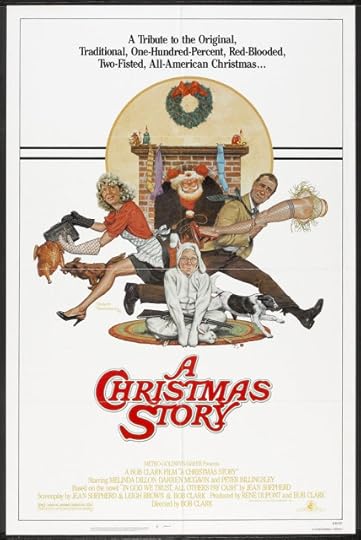
You've seen it. We've all seen it. It's a lot of fun, and if we must watch a Yuletide comedy for 24 hours every Christmas, we could do a lot worse than this one. But really, after all these years, I don't have much else to say about it. Do you? Maybe next year. It's bound to be on this list again, after all.
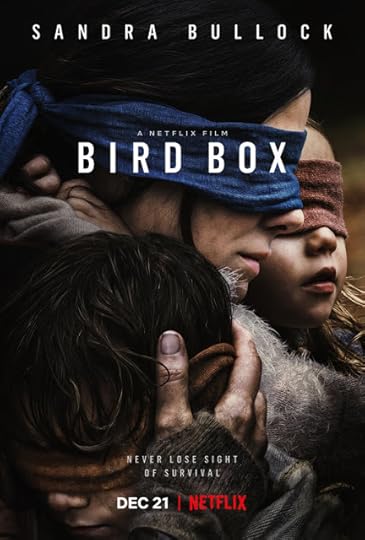
Sort of like, what if "A Quiet Place" but with eyes, and worse? It's not great, by any means, and it has plot holes you could drive a truck through (even if you were blindfolded, har har), but I'll admit it held my interest for (most of) its overly long running time. It's dumb, though, and doesn't make a whole lot of sense as soon as you start thinking about it. Also, credit where credit is due, I guessed the ending. Still, it's pretty much the most popular thing Netflix every released, so you might as well watch it to see what everyone's talking about. You're already paying for Netflix, after all.
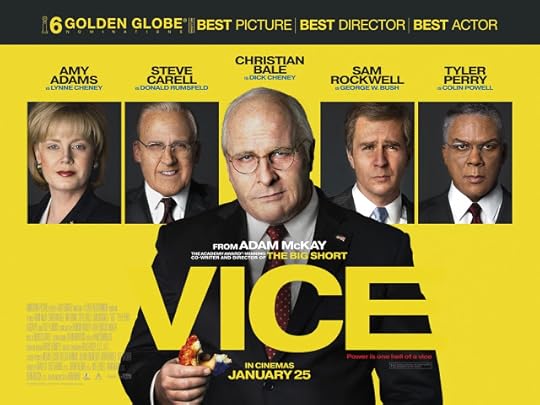
The last movie I saw in 2019, and the last movie to earn a spot on that coveted list of mine. I was a big fan of Adam McCay's last movie, "The Big Short," especially the way it used every method McKay could conceive to tell a complicated, darkly comic story. His style (at least in his non-Will Ferrell movies) sort of reminds me of 1990s Oliver Stone, not so much for the political content (though obviously there's that), but for the way Stone seemed drunk on the idea of filmmaking, changing film stocks, techniques and concepts whenever the mood hit him (or the story seemed to call for it). McKay isn't quite as frenetic as "Natural Born Killers"-era Stone (really, who is?), but he springs plenty of imaginative cinematic pranks in "Vice," from the Shakespearean discussion between Dick and Lynne Cheney (Christian Bale and Amy Adams, both great) to the trick the movie pulls about halfway through that I won't reveal here but that had me laughing in amazement at the balls of it all. Be sure to stick around past the end credits for a "bonus scene" that's easily the second best post-credits gag of the year. (Sorry, "Vice," but "Spider-Man: Into the Spider-Verse" takes the cake in that category.
p.p1 {margin: 0.0px 0.0px 0.0px 0.0px; font: 12.0px 'Times New Roman'} span.s1 {letter-spacing: 0.0px} span.Apple-tab-span {white-space:pre}

Since it earned a much-coveted spot on my Best of the Year list, it's obviously a movie I love, and quite probably my favorite film of the year. It's funny, it's suspenseful, it's wonderfully acted by a top-notch cast and, most especially, it's insanely dark -- probably the darkest political satire since "Dr. Strangelove," a movie that managed to kill off most of the population of the planet, but did it off camera. "The Death of Stalin," by contrast, murders its victims on camera, often right before, right after, or even during a joke, which makes it grimly funny -- but grim, nonetheless.

Another one on the Best of the Year list, though it's the polar opposite of "The Death of Stalin" (except that, oddly enough, both movies are based on comic books). It's a bright, bouncy, downright inspirational extravaganza that takes everything gloriously goofy about comic books and just runs with it. I've never seen a movie that manages to so perfectly capture the vibe of a comic book like this one, from the breathtaking animation to the multi-versal setting to the way the film really leans into the idea that we're going to watch Spider-related origin stories again and again and again. I'm glad I saw this one on the big screen because it's such a visual feast, but I can't wait to study it in detail on the blu-ray. And I'm sorely, sorely tempted to get the "Art of" book. It's that sort of movie.

You've seen it. We've all seen it. It's a lot of fun, and if we must watch a Yuletide comedy for 24 hours every Christmas, we could do a lot worse than this one. But really, after all these years, I don't have much else to say about it. Do you? Maybe next year. It's bound to be on this list again, after all.

Sort of like, what if "A Quiet Place" but with eyes, and worse? It's not great, by any means, and it has plot holes you could drive a truck through (even if you were blindfolded, har har), but I'll admit it held my interest for (most of) its overly long running time. It's dumb, though, and doesn't make a whole lot of sense as soon as you start thinking about it. Also, credit where credit is due, I guessed the ending. Still, it's pretty much the most popular thing Netflix every released, so you might as well watch it to see what everyone's talking about. You're already paying for Netflix, after all.

The last movie I saw in 2019, and the last movie to earn a spot on that coveted list of mine. I was a big fan of Adam McCay's last movie, "The Big Short," especially the way it used every method McKay could conceive to tell a complicated, darkly comic story. His style (at least in his non-Will Ferrell movies) sort of reminds me of 1990s Oliver Stone, not so much for the political content (though obviously there's that), but for the way Stone seemed drunk on the idea of filmmaking, changing film stocks, techniques and concepts whenever the mood hit him (or the story seemed to call for it). McKay isn't quite as frenetic as "Natural Born Killers"-era Stone (really, who is?), but he springs plenty of imaginative cinematic pranks in "Vice," from the Shakespearean discussion between Dick and Lynne Cheney (Christian Bale and Amy Adams, both great) to the trick the movie pulls about halfway through that I won't reveal here but that had me laughing in amazement at the balls of it all. Be sure to stick around past the end credits for a "bonus scene" that's easily the second best post-credits gag of the year. (Sorry, "Vice," but "Spider-Man: Into the Spider-Verse" takes the cake in that category.
p.p1 {margin: 0.0px 0.0px 0.0px 0.0px; font: 12.0px 'Times New Roman'} span.s1 {letter-spacing: 0.0px} span.Apple-tab-span {white-space:pre}
Published on January 30, 2019 18:34
January 17, 2019
Movies I Watched in December, Part 2
Part two of the classic trilogy. Isn't that usually the best part?
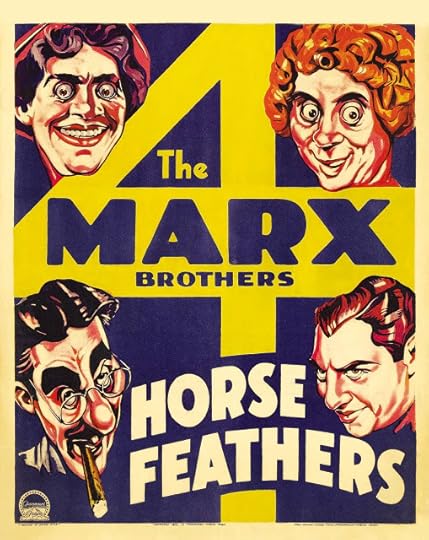
Well, we’ve watched this one more than a few times, haven’t we? It’s one of Allie’s go-to choices for the Marx Brothers (her other, “Monkey Business,” will make its triumphant return in the January recap), and since I think it’s probably the purely funniest Marx movie, I never argue when she wants to give it another spin. This time around, I watched it with my copy of the excellent book “The Annotated Marx Brothers” handy, so I was able to keep track of all the arcane references and bits of oddball trivia. (Did you know the professor whose class gets interrupted is played by Robert Greig, who also played Hives the butler in “Animal Crackers” AND played the eloquent butler who speaks up for the dignity of the downtrodden in Preston Sturges classic “Sullivan’s Travels”? These are the sort of facts I like to keep in my head instead of, say, my in-laws’ birthdays or when my daughter’s school starts.) By the way, despite what you might think after checking out that poster above, this is NOT a horror movie. Those faces ... yeesh! Especially Chico!)
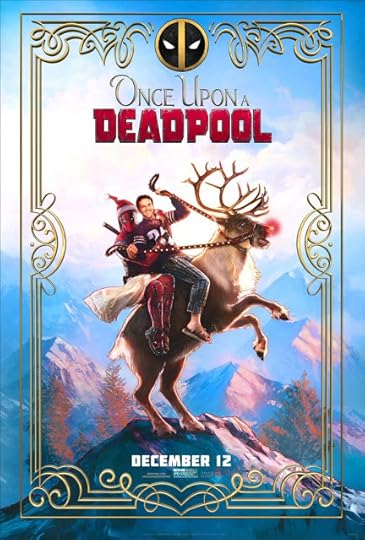
Pretty solid rejiggering of the R-rated superhero comedy that, thankfully, I was able to take my aforementioned daughter to. It wasn’t quite as much fun as the original, filthier, gorier version (it’s surprising how many laughs turned out to be the result of all that CGI blood spatter), but it was an entertaining enough way to (a) pass a couple of hours and (b) strengthen that all-important father-daughter bond. The new scenes, with Deadpool and Fred Savage re-creating the narration chunks of “The Princess Bride,” worked well, and one of the biggest (albeit cheapest) laughs came when Fred talked about how he wanted to fight Matt Damon, only Deadpool kept bleeping out the word “fight” so it sounded like, well, you get the idea. Some wise person pointed out, by the way, that delivering a PG-13 version of the R-rated original might not have been as much an effort to grab younger viewers as it was an effort to harvest money in the lucrative Chinese market. Makes sense to me.
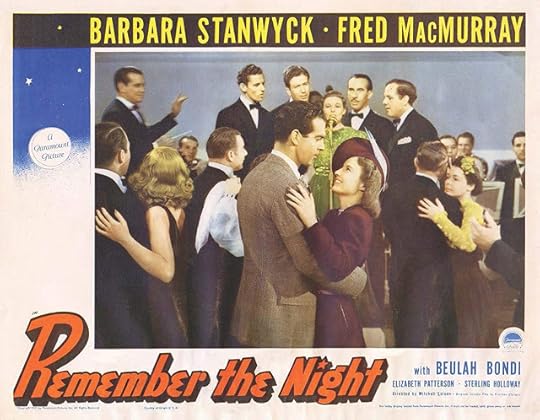
Great Christmas movie, and great movie period, written by (the aforementioned) Preston Sturges and directed with some genuine panache by Michell Leisen. I write about this every year when TCM shows it during the holiday season, and this year they finally re-released the Blu-ray so I was able to snag a copy of my own in case I want to watch Stanwyck and MacMurray trim the tree in, say, August.
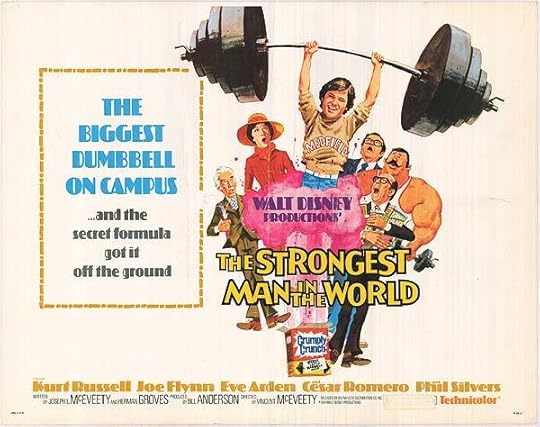
Before “Star Wars” took over my life in 1977 (you might think I’m exaggerating, but I assure you, I am not), this was one of my all-time favorite movies, right up there with “The Bad News Bears” (still surprisingly great) and “Bugsy Malone” (still astonishingly weird). Watching it now, after more than 30 years, a few things strike me: One, it’s no wonder Kurt Russell became a star. Even in this (let’s be honest) extremely mediocre movie, he stands out thanks to his genuine charisma. Two, even in what was obviously a pretty low-budget effort, Disney was able to corral a murderer’s row of character actors to fill out the cast: Joe Flynn, Cesar Romero, Dick Van Patten, Eve Arden, Kathleen Freeman, Phil Silvers, William Schallert, Dick Bakalyan, Gordon Jump, Harold Gould, Ronnie Schell, James Gregory, Bert Mustin and the great Art Metrano. Three, I once considered this the epitome of fast-paced, action-packed comedy. I was wrong. It's slow, it's obvious, and there's surprisingly little action (except for some goofy fight scenes and Joe Flynn in long underwear wrecking a boardroom table.) I have to admit, though, it’s still pretty entertaining on a purely nostalgic and “what the hell?” level.
Up next: That best comedy of the year I promised I'd write about in this post, plus the most comic-booky super-hero movie I've ever seen, that movie about the kid who wants a gun more than anything in the whole wide world, and that movie about a guy who wants power more than anything else in the whole wide world. Spoiler alert: They both get what they want.

Well, we’ve watched this one more than a few times, haven’t we? It’s one of Allie’s go-to choices for the Marx Brothers (her other, “Monkey Business,” will make its triumphant return in the January recap), and since I think it’s probably the purely funniest Marx movie, I never argue when she wants to give it another spin. This time around, I watched it with my copy of the excellent book “The Annotated Marx Brothers” handy, so I was able to keep track of all the arcane references and bits of oddball trivia. (Did you know the professor whose class gets interrupted is played by Robert Greig, who also played Hives the butler in “Animal Crackers” AND played the eloquent butler who speaks up for the dignity of the downtrodden in Preston Sturges classic “Sullivan’s Travels”? These are the sort of facts I like to keep in my head instead of, say, my in-laws’ birthdays or when my daughter’s school starts.) By the way, despite what you might think after checking out that poster above, this is NOT a horror movie. Those faces ... yeesh! Especially Chico!)

Pretty solid rejiggering of the R-rated superhero comedy that, thankfully, I was able to take my aforementioned daughter to. It wasn’t quite as much fun as the original, filthier, gorier version (it’s surprising how many laughs turned out to be the result of all that CGI blood spatter), but it was an entertaining enough way to (a) pass a couple of hours and (b) strengthen that all-important father-daughter bond. The new scenes, with Deadpool and Fred Savage re-creating the narration chunks of “The Princess Bride,” worked well, and one of the biggest (albeit cheapest) laughs came when Fred talked about how he wanted to fight Matt Damon, only Deadpool kept bleeping out the word “fight” so it sounded like, well, you get the idea. Some wise person pointed out, by the way, that delivering a PG-13 version of the R-rated original might not have been as much an effort to grab younger viewers as it was an effort to harvest money in the lucrative Chinese market. Makes sense to me.

Great Christmas movie, and great movie period, written by (the aforementioned) Preston Sturges and directed with some genuine panache by Michell Leisen. I write about this every year when TCM shows it during the holiday season, and this year they finally re-released the Blu-ray so I was able to snag a copy of my own in case I want to watch Stanwyck and MacMurray trim the tree in, say, August.

Before “Star Wars” took over my life in 1977 (you might think I’m exaggerating, but I assure you, I am not), this was one of my all-time favorite movies, right up there with “The Bad News Bears” (still surprisingly great) and “Bugsy Malone” (still astonishingly weird). Watching it now, after more than 30 years, a few things strike me: One, it’s no wonder Kurt Russell became a star. Even in this (let’s be honest) extremely mediocre movie, he stands out thanks to his genuine charisma. Two, even in what was obviously a pretty low-budget effort, Disney was able to corral a murderer’s row of character actors to fill out the cast: Joe Flynn, Cesar Romero, Dick Van Patten, Eve Arden, Kathleen Freeman, Phil Silvers, William Schallert, Dick Bakalyan, Gordon Jump, Harold Gould, Ronnie Schell, James Gregory, Bert Mustin and the great Art Metrano. Three, I once considered this the epitome of fast-paced, action-packed comedy. I was wrong. It's slow, it's obvious, and there's surprisingly little action (except for some goofy fight scenes and Joe Flynn in long underwear wrecking a boardroom table.) I have to admit, though, it’s still pretty entertaining on a purely nostalgic and “what the hell?” level.
Up next: That best comedy of the year I promised I'd write about in this post, plus the most comic-booky super-hero movie I've ever seen, that movie about the kid who wants a gun more than anything in the whole wide world, and that movie about a guy who wants power more than anything else in the whole wide world. Spoiler alert: They both get what they want.
Published on January 17, 2019 07:30
January 12, 2019
Movies I Watched in December, Part 1
For some reason, I managed to see a lot of movies in December. So here's the first batch of write-ups. Enjoy?
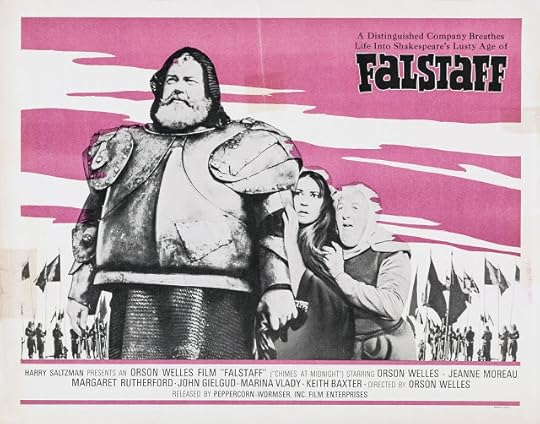
Inspired by seeing Welles' last movie, "The Other Side of the Wind" on Netflix, I finally got around to watching his acclaimed Shakespeare reworking (aka "Chimes at Midnight"), which I've owned on Blu-ray since the last Criterion sale. It's genuinely great, managing to be both epic and intimate on what was notoriously a shoestring budget. The battle scenes are much more exciting and dramatic than the clashes in huge Hollywood films of the era, and they contain a grit and brutality that those movies never even try to achieve. Even better, the film's emotional moments have a real power, driven in no small part to what I'd argue is Welles' best onscreen acting performance. When poor Falstaff finally sees his young friend, Prince Hal, ascend to the throne, it's a truly heartbreaking moment. Why oh why did I wait so long to watch this?
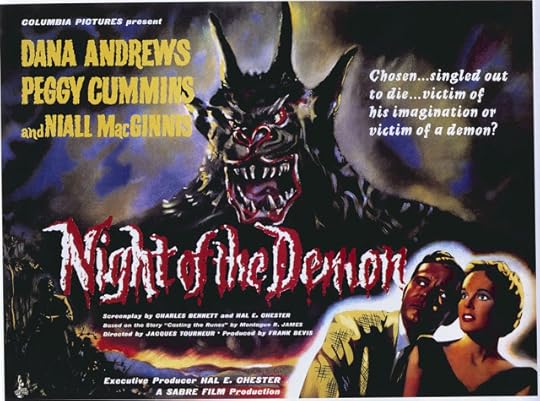
One of my all-time favorite horror movies, released in a jaw-dropping edition from the folks at Powerhouse Indicator: no less than six versions of the movie, numerous documentaries, commentary tracks, trailers and other features, plus a poster (does anyone really hang these up?) and a thick book of essays and images. What really counts, though, is the fact that the movie looks better than ever, making it even more of a pleasure to revisit this classic. It's one of the smartest, most restrained horror movies ever made, but it still knows how (and when) to deliver some genuine scares. (I fall firmly on the pro-"show the monster" side of the argument when it comes to "Night of the Demon.")
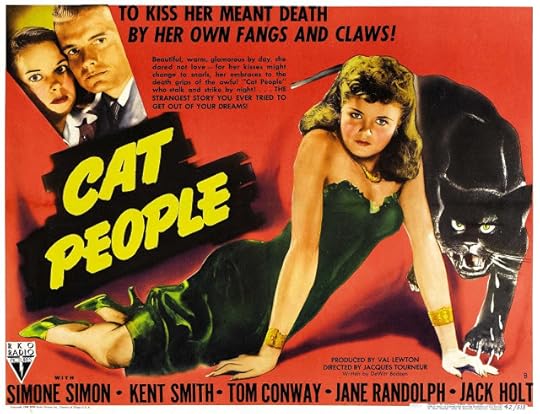
Another favorite horror film, another beautiful blu-ray (this time from Criterion). I've written extensively about "Cat People" before on this blog ( like, here for instance ) and I've included it on pretty much every "favorite movie" list I've ever written. I've seen it many, many times, but it never fails to cast its spell on me. What I think I like most of all about it is how, on a fairly low budget and in a fairly short time (it's only 73 minutes long) Val Lewton and his team manage to create an entire, believable world for the characters. Every time I watch it, by the time it's over, I wish I could hang out there just a little bit longer. One of the all-time greats, that's for sure.
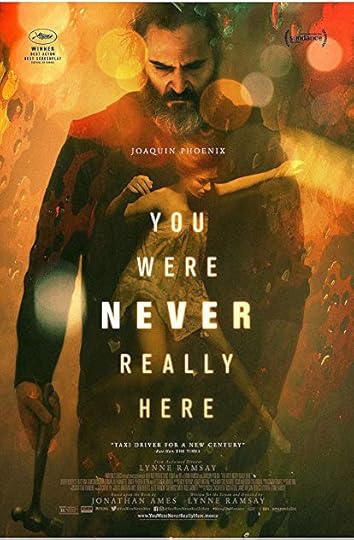
Not what I was expecting, to say the least. I'd heard it compared to "Taxi Driver," with Joaquin Phoenix playing a troubled veteran who rescues a girl from a sex trafficking ring. So far, that seems pretty close to Scorsese's classic. But writer/director Lynne Ramsey handles that story in a very different way, making Phoenix' journey more ethereal and emotional, hinting at his past without spelling it out and deliberately short-circuiting what could be a "Death Wish" sort of plot to get at something deeper. I wouldn't place it on the same level as "Taxi Driver" (a high level indeed), but it's very good -- and something entirely different (to its credit). Phoenix, possibly the best actor working today, is at the top of his game here, revealing little but suggesting multitudes. It's not for the timid, but well worth checking out if you're willing to follow Phoenix into some dark places. Bonus points for using the '70s soft rock chestnut "I've Never Been to Me" in a way that is, frankly, astonishing. And hell, the movie made my Top 10 list. (Trivia note: Judith Roberts, who plays Phoenix's mom, also played "The Beautiful Girl Across the Hall" in David Lynch's "Eraserhead" more than 40 years ago.)
Up next: The Marxes, sanitized Deadpool, a Christmas classic, a Disney sort-of-classic and the best comedy of the year
p.p1 {margin: 0.0px 0.0px 0.0px 0.0px; font: 12.0px 'Times New Roman'} span.s1 {letter-spacing: 0.0px} span.Apple-tab-span {white-space:pre}

Inspired by seeing Welles' last movie, "The Other Side of the Wind" on Netflix, I finally got around to watching his acclaimed Shakespeare reworking (aka "Chimes at Midnight"), which I've owned on Blu-ray since the last Criterion sale. It's genuinely great, managing to be both epic and intimate on what was notoriously a shoestring budget. The battle scenes are much more exciting and dramatic than the clashes in huge Hollywood films of the era, and they contain a grit and brutality that those movies never even try to achieve. Even better, the film's emotional moments have a real power, driven in no small part to what I'd argue is Welles' best onscreen acting performance. When poor Falstaff finally sees his young friend, Prince Hal, ascend to the throne, it's a truly heartbreaking moment. Why oh why did I wait so long to watch this?

One of my all-time favorite horror movies, released in a jaw-dropping edition from the folks at Powerhouse Indicator: no less than six versions of the movie, numerous documentaries, commentary tracks, trailers and other features, plus a poster (does anyone really hang these up?) and a thick book of essays and images. What really counts, though, is the fact that the movie looks better than ever, making it even more of a pleasure to revisit this classic. It's one of the smartest, most restrained horror movies ever made, but it still knows how (and when) to deliver some genuine scares. (I fall firmly on the pro-"show the monster" side of the argument when it comes to "Night of the Demon.")

Another favorite horror film, another beautiful blu-ray (this time from Criterion). I've written extensively about "Cat People" before on this blog ( like, here for instance ) and I've included it on pretty much every "favorite movie" list I've ever written. I've seen it many, many times, but it never fails to cast its spell on me. What I think I like most of all about it is how, on a fairly low budget and in a fairly short time (it's only 73 minutes long) Val Lewton and his team manage to create an entire, believable world for the characters. Every time I watch it, by the time it's over, I wish I could hang out there just a little bit longer. One of the all-time greats, that's for sure.

Not what I was expecting, to say the least. I'd heard it compared to "Taxi Driver," with Joaquin Phoenix playing a troubled veteran who rescues a girl from a sex trafficking ring. So far, that seems pretty close to Scorsese's classic. But writer/director Lynne Ramsey handles that story in a very different way, making Phoenix' journey more ethereal and emotional, hinting at his past without spelling it out and deliberately short-circuiting what could be a "Death Wish" sort of plot to get at something deeper. I wouldn't place it on the same level as "Taxi Driver" (a high level indeed), but it's very good -- and something entirely different (to its credit). Phoenix, possibly the best actor working today, is at the top of his game here, revealing little but suggesting multitudes. It's not for the timid, but well worth checking out if you're willing to follow Phoenix into some dark places. Bonus points for using the '70s soft rock chestnut "I've Never Been to Me" in a way that is, frankly, astonishing. And hell, the movie made my Top 10 list. (Trivia note: Judith Roberts, who plays Phoenix's mom, also played "The Beautiful Girl Across the Hall" in David Lynch's "Eraserhead" more than 40 years ago.)
Up next: The Marxes, sanitized Deadpool, a Christmas classic, a Disney sort-of-classic and the best comedy of the year
p.p1 {margin: 0.0px 0.0px 0.0px 0.0px; font: 12.0px 'Times New Roman'} span.s1 {letter-spacing: 0.0px} span.Apple-tab-span {white-space:pre}
Published on January 12, 2019 13:44
January 3, 2019
What I'm looking forward to in 2019, Part 1
With a new year looming, there's lots of promising pop culture on the horizon. Here's a sample of what I'm personally anticipating in the next 12 months, with another handful to follow in the next post. Consider these my highest possible recommendations for things I haven't actually seen yet.
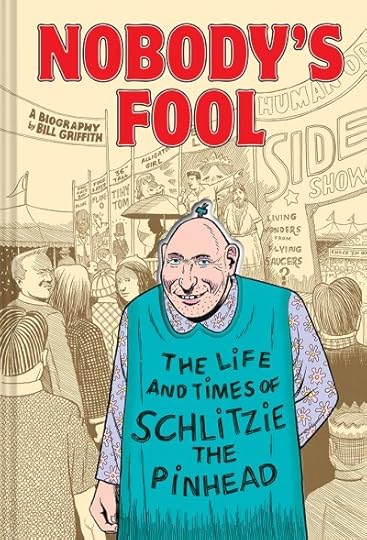
Bill Griffith's "Nobody's Fool: The Life and Times of Schlitzie the Pinhead" (March 19) Griffith's 2015 graphic memoir, "Invisible Ink," about his mother's affair with an obscure cartoonist, was one of the best things I've read in years, and this volume looks to be just as good. Griffith is a real student of American cultural history, so the story of legendary sideshow performer Schlitzie (best know for appearing in Tod Browning's "Freaks") seems right up his alley.
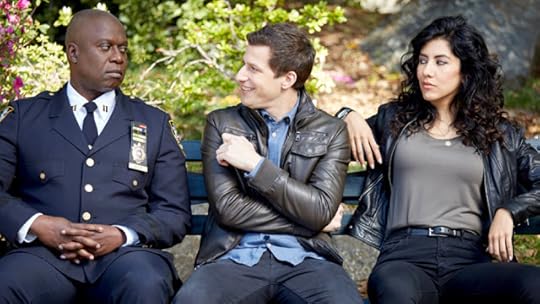
The return of "Brooklyn 99" (Thursday, Jan. 10) Not just because it's funny. Not just because it's the only network show we watch at Casa de Pfeifer. But because my daughter was distraught when Fox canceled it last year, and its miraculous resurrection on NBC shows her that the world isn't always a cruel, unfair place. Sometimes, good things happen.
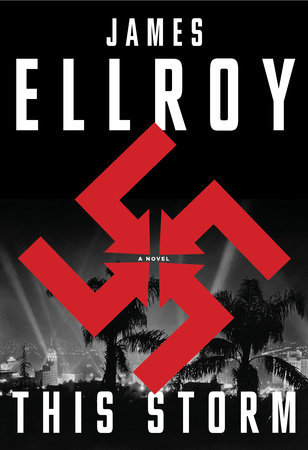
The new book from James Ellroy (June 4) Ellroy can be infuriating, frustrating and self-indulgent, but he's also like no one else -- and one of my all-time favorite writers. It can take a while to get into the staccato rhythm of his books, but once you do, you're addicted and have no choice but to barrel through to what's bound to be a bleak, brutal and bloody (but satisfying) end. His latest book, "This Storm" continues in the World War II-era setting of his last book, "Perfida," and promises to further explain how monstrous L.A. cop Dudley Smith became one of the most terrifying characters in literature.

The final season of "Veep" (Spring?) I wish it weren't the final season, but I'll be glad to see the return of arguably the sharpest show on TV. Mean-spirited, fast-paced and consistently hilarious, it's just the sort of political show we need today. (Let's face it, this isn't exactly the time for the warm fuzziness of "The West Wing.") Related question: Is Julia Louis-Dreyfus one of the greatest comedians in history? Related answer: You bet.
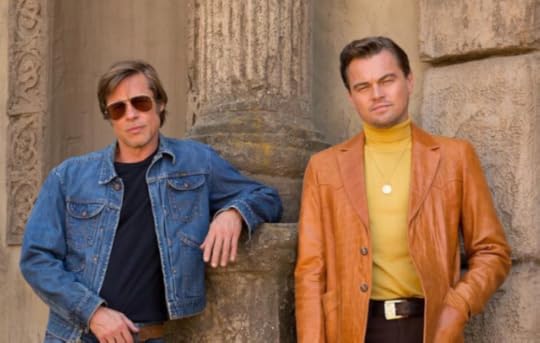
Quentin Tarantino's "Once Upon a Time in Hollywood" (Aug. 9) I'd watch any movie that Tarantino makes, because I genuinely think he's one of the most compelling filmmakers I've ever seen (yes, I said it), but a story set in 1969 Los Angeles that is somehow connected to the Manson murders feels like the movie he's been waiting his entire life to make. I'm trying to go in as cold as possible, but the glimpses we've seen of sections of Hollywood returned to their vintage late '60s glory get my hopes high indeed.
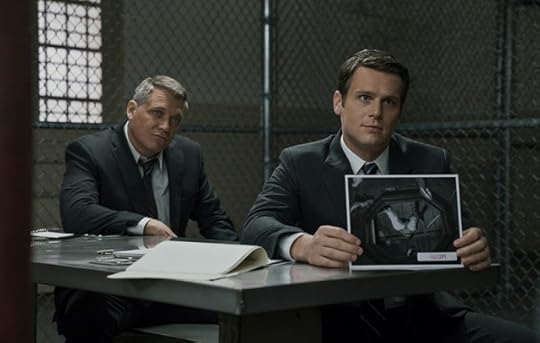
Season 2 of "Mindhunter" (June? October?) This David Fincher Netflix show about two FBI agents pioneering the work of profiling serial killers in the 1970s was arguably the best show of 2017, and now that filming is done on season 2, we can count on it arriving, well, sometime this year. This season is going to include an appearance by none other than Charles Manson, who will be played by Damon Herriman -- who plays the same role in Tarantino's movie.
Jordan Peele's new movie, "Us" (March 14) "Get Out" was great, obviously, and have you SEEN this trailer?
Coming up: Three books about weird pop culture, part two of a groundbreaking graphic novel, a biopic starring Eddie Murphy and the podcast you've all been dying to hear again.

Bill Griffith's "Nobody's Fool: The Life and Times of Schlitzie the Pinhead" (March 19) Griffith's 2015 graphic memoir, "Invisible Ink," about his mother's affair with an obscure cartoonist, was one of the best things I've read in years, and this volume looks to be just as good. Griffith is a real student of American cultural history, so the story of legendary sideshow performer Schlitzie (best know for appearing in Tod Browning's "Freaks") seems right up his alley.

The return of "Brooklyn 99" (Thursday, Jan. 10) Not just because it's funny. Not just because it's the only network show we watch at Casa de Pfeifer. But because my daughter was distraught when Fox canceled it last year, and its miraculous resurrection on NBC shows her that the world isn't always a cruel, unfair place. Sometimes, good things happen.

The new book from James Ellroy (June 4) Ellroy can be infuriating, frustrating and self-indulgent, but he's also like no one else -- and one of my all-time favorite writers. It can take a while to get into the staccato rhythm of his books, but once you do, you're addicted and have no choice but to barrel through to what's bound to be a bleak, brutal and bloody (but satisfying) end. His latest book, "This Storm" continues in the World War II-era setting of his last book, "Perfida," and promises to further explain how monstrous L.A. cop Dudley Smith became one of the most terrifying characters in literature.

The final season of "Veep" (Spring?) I wish it weren't the final season, but I'll be glad to see the return of arguably the sharpest show on TV. Mean-spirited, fast-paced and consistently hilarious, it's just the sort of political show we need today. (Let's face it, this isn't exactly the time for the warm fuzziness of "The West Wing.") Related question: Is Julia Louis-Dreyfus one of the greatest comedians in history? Related answer: You bet.

Quentin Tarantino's "Once Upon a Time in Hollywood" (Aug. 9) I'd watch any movie that Tarantino makes, because I genuinely think he's one of the most compelling filmmakers I've ever seen (yes, I said it), but a story set in 1969 Los Angeles that is somehow connected to the Manson murders feels like the movie he's been waiting his entire life to make. I'm trying to go in as cold as possible, but the glimpses we've seen of sections of Hollywood returned to their vintage late '60s glory get my hopes high indeed.

Season 2 of "Mindhunter" (June? October?) This David Fincher Netflix show about two FBI agents pioneering the work of profiling serial killers in the 1970s was arguably the best show of 2017, and now that filming is done on season 2, we can count on it arriving, well, sometime this year. This season is going to include an appearance by none other than Charles Manson, who will be played by Damon Herriman -- who plays the same role in Tarantino's movie.
Jordan Peele's new movie, "Us" (March 14) "Get Out" was great, obviously, and have you SEEN this trailer?
Coming up: Three books about weird pop culture, part two of a groundbreaking graphic novel, a biopic starring Eddie Murphy and the podcast you've all been dying to hear again.
Published on January 03, 2019 11:21
January 1, 2019
My Favorite Movies of 2018*
* Meaning my favorites of the movies I watched for the first time in 2018, of course. Otherwise, this list would be stuffed with repeat viewings of "The Apartment" and "Monkey Business" every year. Also, they're in alphabetical order. It was hard enough narrowing this down to 10 movies. Putting them in any sort of qualitative order? That way lies madness...
(If there's a review on this blog, the title is the link. Otherwise, I saw it in December and haven't written about it yet. By the way, if you do the math, you'll see that fully 40 percent of my favorite movies of 2018 were seen in December -- and one of them I saw last night, on the last day of December. What the hell that all means, I have no idea.)
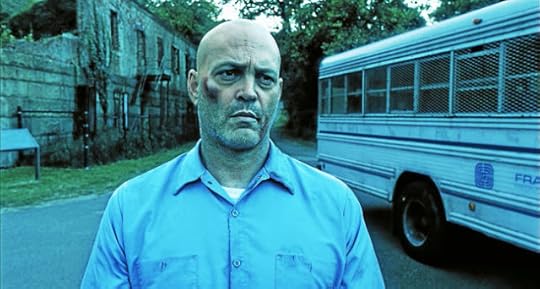
Brawl in Cell Block 99
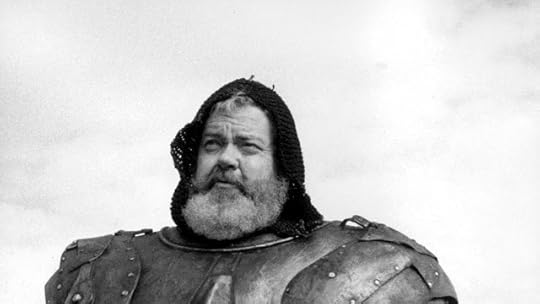
Chimes at Midnight
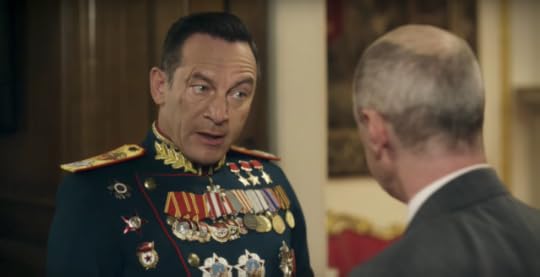
The Death of Stalin
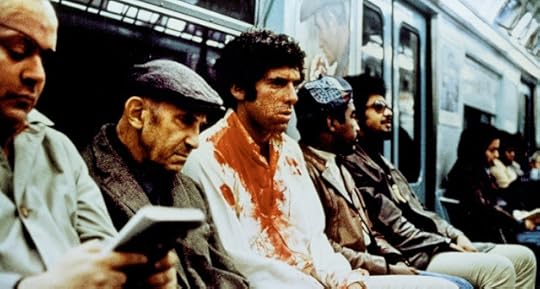
Little Murders
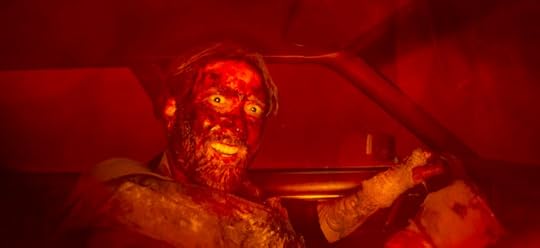
Mandy
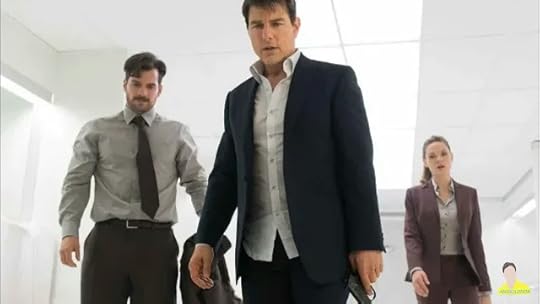
Mission: Impossible -- Fallout
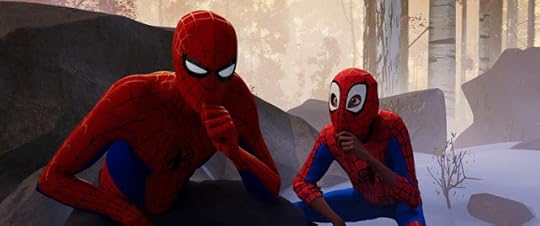
Spider-Man: Into the Spider-Verse
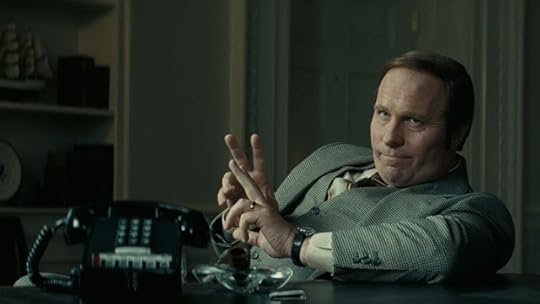
Vice
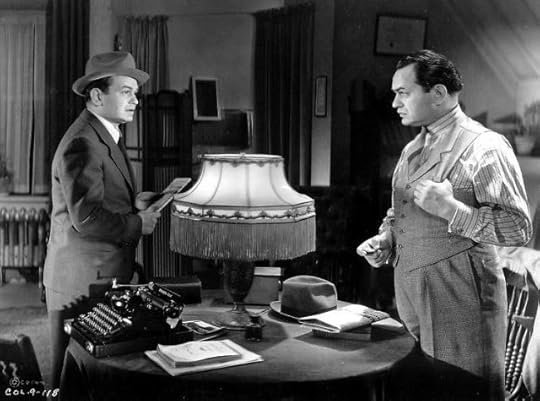
The Whole Town's Talking
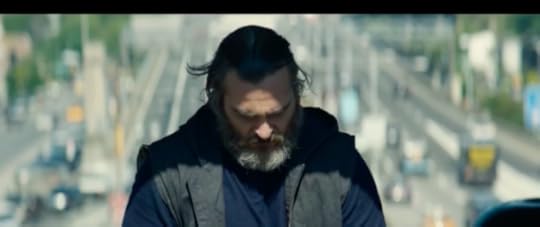
You Were Never Really Here
Runners up: "Sniper," "Annihilation," "Avengers: Infinity War," "The Hunt for the Wilderpeople," "The Swimmer," "The Other Side of the Wind," "Isle of Dogs," "The Ballad of Buster Scruggs"
(If there's a review on this blog, the title is the link. Otherwise, I saw it in December and haven't written about it yet. By the way, if you do the math, you'll see that fully 40 percent of my favorite movies of 2018 were seen in December -- and one of them I saw last night, on the last day of December. What the hell that all means, I have no idea.)

Brawl in Cell Block 99

Chimes at Midnight

The Death of Stalin

Little Murders

Mandy

Mission: Impossible -- Fallout

Spider-Man: Into the Spider-Verse

Vice

The Whole Town's Talking

You Were Never Really Here
Runners up: "Sniper," "Annihilation," "Avengers: Infinity War," "The Hunt for the Wilderpeople," "The Swimmer," "The Other Side of the Wind," "Isle of Dogs," "The Ballad of Buster Scruggs"
Published on January 01, 2019 14:24
December 22, 2018
Movies I Watched in November, Part 3
Wrapping up November with two fascinating documentaries and one even more fascinating fictional film...
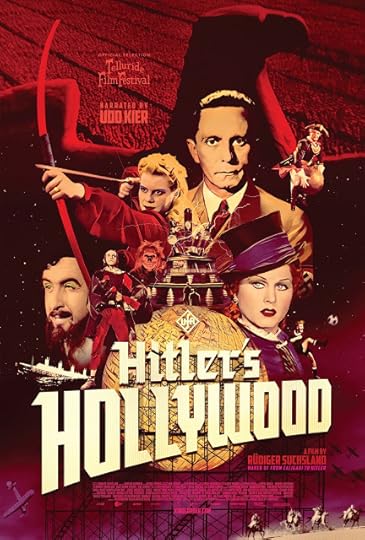
People get the wrong idea about World War II-era Germany. That’s not to say it wasn’t a largely racist, mass murdering country led by a group of sociopaths – it definitely was – but that’s not ALL it was. Before it was largely bombed into rubble by Allied forces, Germany was a genuine world power, a cultural center, and most pertinent to this blog, a cinema hotspot. Since the early days of film, German directors had been leading the way. Legends like F.W. Murnau and Fritz Lang, along with dozens of others, fled to America when Hitler and his boys took power, but not everyone skipped town. Josef Goebbels, Hitler’s minister of propaganda, was a fiend for films, and if anything, the German movie industry expanded under Nazi rule. Which brings us, finally, to “Hitler’s Hollywood,” a fascinating documentary by Rudiger Suchsland that takes a detailed look at movies and movie stars I’m guessing you’ve never, ever heard of. Narrated by Udo Kier (a perfect, perfectly unnerving choice) and illustrated with hundreds of clips, “Hitler’s Hollywood” shows how German continued to turn out big-budget, popular movies in virtually every genre (except, oddly enough, horror and sci-fi, two genres pioneered by German directors in the silent era) and, subtly and not-so-subtly, wove strands of propaganda throughout just about every one of them. Sometimes it was less threatening stuff, the sort of thing Hollywood was including on a regular basis – strength of family, love of country, loyalty to government, that sort of thing. But this being Germany, circa World War II, the films also taught viewers to be subservient to the group, know their place in society and, most notoriously, don’t trust the Jews. Historical films were especially guilty of this, painting the Jewish people as the fault of the world’s ills and, by implication, deserving of whatever punishment they were receiving in the present day. There were other themes, too – one film has a kindly doctor who performs a mercy killing on his terminally ill wife. It may sound progressive for a 1941 film, but it was released just before the Nazis started using euthanasia to eliminate “undesirables.” This sensitive drama was actually propaganda to get the German public to accept the concept and tacitly approve its use.
One of the most intriguing things about “Hitler’s Hollywood” is the what-if questions it poses. If Germany hadn’t (a) started World War II and (b) become synonymous with monstrous evil, what might have happened to these actors and filmmakers? The clips do a great job of showcasing their star qualities and talent, and the scenes from dramas, comedies and musicals are very impressive – and not far from what Hollywood was creating at the same time. Clearly, they would’ve found a place in cinema history proper. Some of them, in fact, did. Detlef Sierck made Nazi movies for years before escaping to the west, where he became a legendary director under the name “Douglas Sirk.” And Ingrid Bergman, who was born in Sweden, made at least one movie for the Third Reich, just a few years before she came to America and fought for the goodguys in “Casablanca.” Hooray, I guess, for Hollywood.
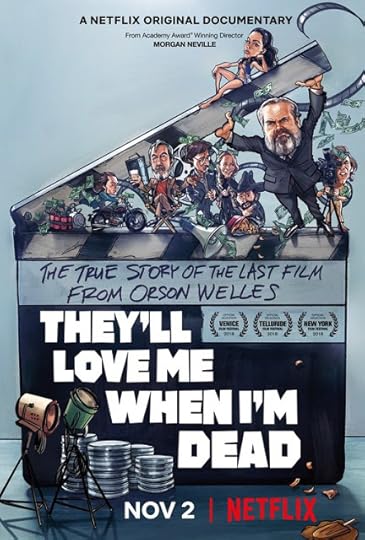
If you watch Orson Welles’ famed “final movie,” “The Other Side of the Wind” on Netflix (and I definitely recommend that you do), be sure to watch the companion documentary, “They’ll Love Me When I’m Dead” as well. (It’s also on Netflix.) If nothing else, it will help put “Wind” into perspective, and you’ll get a better idea of (a) what you just watched and (b) how difficult it was for Welles to put together even the fractured version that sat on a shelf for decades. At best, “They’ll Love Me” is a portrait of a great director who had become largely a joke in Hollywood but never, ever gave up on making movies. Seeing him struggle to get something on film is frustrating, but it’s also oddly inspiring. And if you want to learn even more about “The Other Side of the Wind,” how it got made and how it – almost, but not quite – got lost forever, pick up a copy of Josh Karp’s “Orson Welles’ Last Movie: The Making of ‘The OtherSide of the Wind’.” It’s a fast-paced book that tells the whole story, except for the part where Netflix acquired the rights and actually released “Wind” – Karp’s book was written before that surprising turn of events took place. I enjoyed reading the book even more for that reason. At the end, Karp and everyone else is sad because they’ll never get to see the movie in question … and I had already seen it.
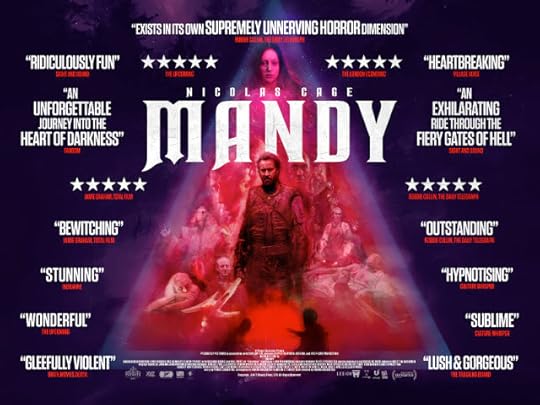
As soon as I saw the trailer for “Mandy,” I knew this was a movie I had to watch. Sure, Nicolas Cage starred in it, and I think Cage is legitimately great in a number of films, especially “Raising Arizona” and “Adaptation.” But Cage wasn’t the only thing compelling me to see “Mandy” -- it was everything in that trailer, from the guiding hand of director Panos Cosmatos (his 2010 film “Beyond the Black Rainbow” is a mind-bender) to the score by Johann Johannsson to the flashes of “Heavy Metal”-esque animation to the biker gang that looked like something from “Hellraiser” to the way co-stars Andrea Riseborough and Linus Roache seemed to blend into each other at a certain point. Also, Nicolas cage using a chainsaw to fight a guy with an even bigger chainsaw. Also, Bill Duke. Also, a tiger. How could I not want to watch that? Just seeing if Cosmatos could fit it all into a semi-coherent film would be worth the price of admission.
And, I’m happy to say, I wasn’t disappointed, even though "Mandy" pushed the boundaries of "semi-coherent" about as far as they could go. Sticking this one into the blu-ray player Thanksgiving night, when the wife and child were away (and trust me, this is not something they would have enjoyed), I immersed myself in the strange, disturbing, exciting, balls-out crazy world of “Mandy.” I’ve heard tell of movies that are best experienced when you’re high (never done it myself personally – I’m too much of a movie nerd) and this film certainly seems to fall into that category, but even more than that, “Mandy” seems to deliver a bit of a contact high all by itself, with its unique combination of sound, visuals, performances and (something reviewers seem to be ignoring) pacing creating an enveloping, oddball reality of its own.
The movie is very much divided into two halves, the second delivering all the craziness (both from Mr. Cage and otherwise) that you'd expect from the trailers, but the first being a surprisingly methodical and emotional prelude to the mayhem, setting up the relationship between our loving couple -- woodsman Red (Cage) and paperback fantasy fan Mandy (Riseborough). We get to know them, in a way, and get a feeling for how much they love each other. It's touching, but it's also troubling, because we know how horribly wrong things are about to go. And then, when they do go wrong (and boy oh boy, do they ever), you realize that the slow, deliberate first half was Comatos winding up the springs so he could release them in the second half. Everyone is raving about Cage's unleashed performance in "Mandy," and he deserves the accolades, but let's be honest: Cage has delivered some pretty unhinged acting in some fairly terrible movies. Here, though, it all serves a purpose. Rather than watch an actor cut loose, you're watching a character react, and it's a thrilling, mesmerizing, even draining experience. But it's never boring, and Cage is never less than riveting. What's more, "Mandy" manages to convey they feeling of a nightmare you can't wake up from (and I mean that as a compliment), with elements not making logical sense but somehow making perfect emotional sense. Saying "Hell, that could never happen!" or asking "Why did the hell that happen?" is missing the point. This is one movie where you need to go along for the ride.
Published on December 22, 2018 14:30
December 7, 2018
Movies I Watched in November, Part 2: 'The Other Side of the Wind'
If any movie deserves its own blog post, it's Orson Welles' final film, right?
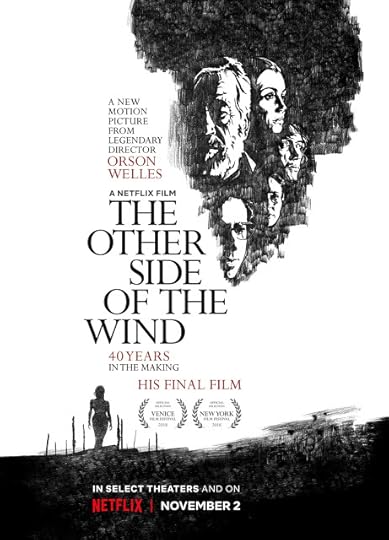
Last time, here on the blog, I mentioned how bizarre it was that I was able to watch the brand-new Coen brothers movie on Netflix. That’s nothing compared to how strange it felt to sit down, fire up the app on my TV and watch a legendary film by a legendary director that, until recently, looked like it might never, ever see the light of day.
Orson Welles spent years filming “The Other Side of the Wind” in bits and pieces, changing the cast, tweaking the plot (or at least the basic concepts – this isn’t exactly a plot-heavy film) and working behind the scenes to dig up whatever financing he could. When he died in 1985, the film was still (a) unfinished and (b) mired in legal tangles that would doom a lesser film to eternity in a vault. But in 2017, to virtually everyone’s astonishment, Netflix threw $5 million at the project; got everyone to play nice; and had the original negative, dailies and other footage shipped to Los Angeles where it was finally assembled, scored, finalized and shown to a select audience, including Quentin Tarantino, Paul Thomas Anderson and Crispin Glover. And now, assuming you have Netflix, you can watch it, too. Right now. At this moment. Just by pressing a button.
So, how is it?
First off, there’s no possible way "The Other Side of the Wind" could live up to the legend it's accumulated over the decades, both thanks to Welles' involvement and the fact that film fans assumed they’d never get to see it. There’s just too much mythology, mystery and controversy make any sort of level-headed evaluation possible. It’s like what Chuck Klosterman said about the Guns N’ Roses album “Chinese Democracy” when it finally arrived in stores: “Reviewing ‘Chinese Democracy’ is not like reviewing music. It’s more like reviewing a unicorn. Should I be primarily blown away that it exists at all?”
Well, as far as “The Other Side of the Wind” goes, its existence alone is pretty impressive. But you know what? So is the movie itself. Conceived by Welles as a reaction to the art films of the era (the late ‘60s and early ‘70s), “The Other Side of the Wind” depicts the last day in the life of Jake Hannaford (John Huston), an aging (but legendary) director working on a troubled art film. (Not at all autobiographical, obviously.) The film cuts between a party for Hannaford and the film-within-a-film (also titled “The Other Side of the Wind”), is a plotless but visually stunning collection of scenes/shots mostly involving a mysterious woman (Oja Kodar, Welles’ longtime mistress and creative partner) and the James Dean-like star (Robert Random) who has a strange hold over Hannaford.
It’s a bit of a mess, to be honest, but it's a fascinating mess, with the sensory overload of the party scenes (overlapping conversations, pointless digressions and frenetic editing) balancing nicely with the relative peace and calm of the artsy fartsy stuff. Welles claimed those scenes were a parody of filmmakers like Antonioni, but truth is, they’re beautiful and compelling all by themselves. Welles still had the touch in his mid-50s, and the more permissive era gave him the chance to try things he'd never done before -- like, for instance shoot a mesmerizing sex scene that he couldn't have included in “Citizen Kane.” For me, the highlight of "The Other Side of the Wind" is an elaborate sequence set in a restroom that equals just about anything from the era when it was made – or from our current era, for that matter. It reminds you how great Welles could be when he was excited about a project – and he was clearly excited about “The Other Side of the Wind.” Why else devote so much time and energy to getting it made?
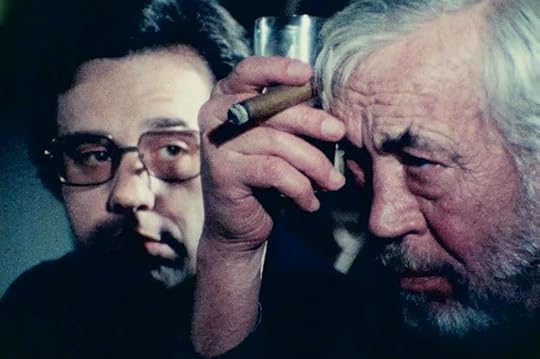
The film’s also fascinating as an artifact, collecting performances by people who never shared the screen before and definitely would never do so again. Huston is great, of course, and Welles was right to cast an actual legendary director as his fictional legendary director. I love Welles as an actor (see the blog post on “Chimes at Midnight” coming up soon), but Huston works better than Welles would have here, serving as the (relatively) calm center of all this chaos. Hannaford dies on the night the movie takes place (not a spoiler – just like in “Kane,” Welles reveals his main character’s fate in the opening seconds of the film), but unlike Welles, Huston still had some great films ahead of him: “Prizzi’s Honor,” “The Dead” and my personal favorite, “The Man Who Would be King.” Weird to think he and Welles made their directing debut the same year (1941) and delivered two classics that still stand the test of time (“Kane” and “The Maltese Falcon”). The difference? One of them knew how to play the (studio) game, the other didn’t – or at least refused to.
The rest of the cast is a who’s who for movie nerds (like, ahem, the guy writing this blog post). Peter Bogdanovich essentially plays himself, a critic-turned Hannaford acolyte-turned successful director. (His role originally went to, believe it or not, Rich Little, who still shows up in some of the party scenes.) Other Welles’ pals in “The Other Side of the Wind” include Mercedes McCambridge (“Touch of Evil”), Paul Stewart (“Kane”) and Orson’s old, somewhat shattered buddy Edmund O’Brien. Party guests include Dennis Hopper, Cameron Mitchell, Stafford Repp (Commissioner Gordon from the “Batman” TV show!), Gregory Sierra (Julio from “Sanford & Son”!), Angelo Rossitto (from “Freaks” and “Mad Max: Beyond Thunderdome”!) director Cameron Crowe, disgraced CBS chief Les Moonves and many, many more. It’s chaos, to be sure, but what successful party – or successful movie -- isn’t a little chaotic?
“The Other Side of the Wind” isn’t a great film. Given all the delays, heartbreak and budget battles that went into its production, editing and release, maybe it never had a shot at true greatness. But it is a film – the last film, in fact -- from a great director, one who was trying to do something exciting and different – and, yes, something great – against some pretty overwhelming odds. Since his early days, when he was staging groundbreaking plays in New York and conjuring up fake Martians in New Jersey, Welles always seemed more interested in the process than the result, and if the end result of “The Other Side of the Wind” isn’t what he dreamed of (and everyone hoped for), it’s still an entertaining, challenging, fascinating artifact, one where the troubles – and thrills – of the production shine through in every frame.
The fact that Welles never got to see the final film is a tragedy, but the fact that you and I can see it, right now, is some sort of miracle.
Published on December 07, 2018 17:10
December 6, 2018
Movies I Watched in November, Part 1
What's this? The first part of the November recap already arriving in the first week of December? Must be one of those Christmas miracles you hear about at this time of year...
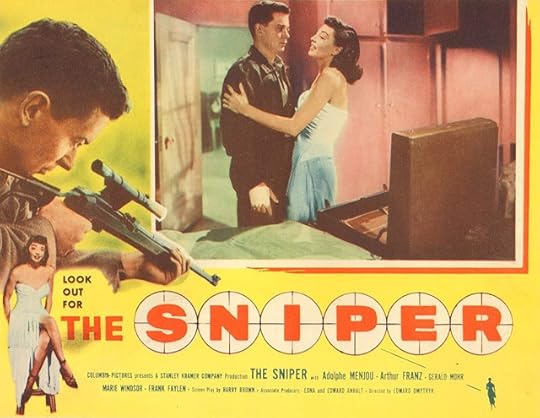
Very good, very grim 1952 film noir that aired recently on (where else?) TCM. I’d heard great things about this one but never managed to catch it – and I’m glad I did. It’s excellent and feels decades ahead of its time. Though the story of a troubled loner (Arthur Franz) eventually shifts to offer equal time to the cops pursuing him, for most of its running time, “The Sniper” plays like a proto-“Taxi Driver,” with Franz becoming more and more desperately tense as the pressures of fifties-era male/female dynamics continue to frustrate him. The scenes of him stalking his victims from the rooftops of San Francisco are startling (the whole film was shot on location to spectacular effect), and poor Marie Windsor, legendary star of such classic noirs as “The Killing” and “Narrow Margin” is his first victim. Don’t miss this one the next time it shows up on TCM’s Noir Alley.
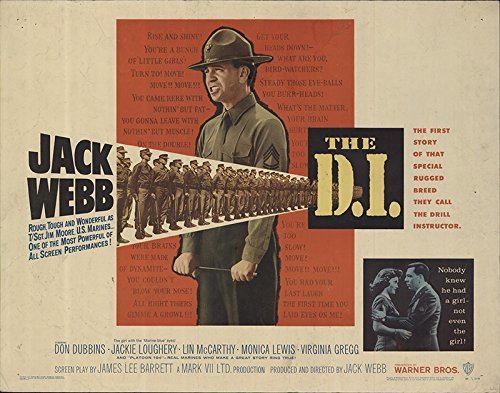
I’m a big fan of Jack Webb, both his legendary cop show “Dragnet” and his films, from his wacky role in “Sunset Blvd” to “-30-,” one of my favorite newspaper movies. Sure, that love is partly ironic – given Webb’s notoriously mannered (wooden?) onscreen persona, how could it not be – but it’s partly sincere, too. I’m genuinely fascinating and entertained by his work both in front of and behind the camera, and this 1957 drama is no exception. Following a group of raw Marine recruits and their demanding drill instructor (Webb, of course), it manages to be compelling, corny, amusing and downright mystifying. The scenes with the recruits are the most mundane sections of the film, though Webb’s instructional style borders on obsessive. For instance, Webb forces the whole squad to find the sand flea that bit one of the recruits on patrol, causing him to slap the bug and alert the hypothetical enemy – the specific flea, that is. It’s not exactly “Full Metal Jacket,” but it’s along the same lines, minus R. Lee Emery’s profanity and application of physical violence. (Plus Kubrick's grim view of the USMC – this is definitely not a movie about turning healthy young men into soulless killing machines.) The bizarre sections of “The D.I.” are the ones that feature Webb awkwardly (as if he could do it any other way) romancing a woman at the local tavern/supper club/whatever the hell that place is. The banter is borderline surreal, especially with Webb wearing a smug smile and his ever-present dress blues. The relationship is never even slightly believable, despite the fact that he and the actress (Jackie Loughery) were actually husband and wife. By the way, the end credits reveal that many of the movie Marines were, in fact, actual Marines. They bring a nice slice of authenticity, but they don’t exactly raise the acting level of the film.
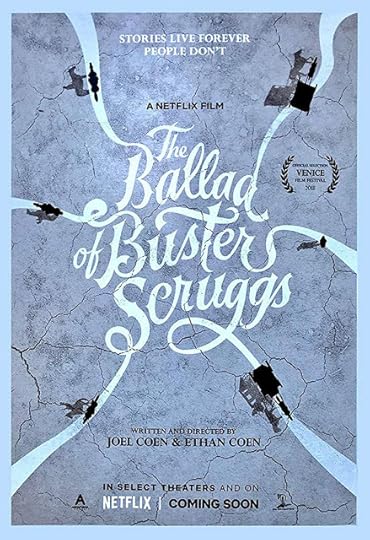
I’ve been a dedicated Coen brothers guy since my college buddy Eric and I stumbled into a theater in 1987 to watch “Raising Arizona” and stumbled back out wondering what the heck that was we just watched. (We definitely knew we loved it.) So who would think that one day, 31 years later, I’d be watching their brand-new movie on my big-screen, hi-def, internet-connected TV? I wouldn’t put “The Ballad of Buster Scruggs” on the level of “Raising Arizona,” but it’s a solid effort from Joel and Ethan, and as is the case with their best movies, one that reveals more levels of depth the more you think about it. Like all anthologies, some segments are more successful than others, but “Buster” has a remarkably high batting average. Things start off with a literal bang with Tim Blake Nelson playing a jolly singing cowboy who also happens to be a very skilled murderer, and the dark comedy continues with a short but effective bit where James Franco is hung by the neck – twice. These shorts both rely heavily on cartoony characters and outrageous violence, but Franco’s story ends on an odd but effective grace note of the sort that the Coens do especially well. After those short bursts of grim fun, “Buster Scruggs” slows down and gets serious with more somber stories about an armless/legless entertainer (played by Dudley Dursley himself, Harry Melling) and his manager (Liam Neeson); a very dedicated prospector (Tom Waits, proving he should’ve been cast by the Coens years ago); a young woman (Zoe Kazan) in a wagon train; and a group of travelers in a stage coach who slowly but surely realize what their actual destination is. They all work beautifully on an individual basis, but they work as a group even better, and by the end, when the realization dawns on those passengers, I was right there with them. If you have Netflix (and being that this isn’t 1987, I’m guessing you do), then by all means skip those $100 million "Friends" reruns and watch this instead.
Coming up: A brand-new/decades old movie from a certain legendary director, a documentary about that movie, one of the strangest films I’ve seen in years (which is saying something) and, last but not least, another documentary, this one revealing the Third Reich roots of Douglas Sirk and (gasp!) Ingrid Bergman.

Very good, very grim 1952 film noir that aired recently on (where else?) TCM. I’d heard great things about this one but never managed to catch it – and I’m glad I did. It’s excellent and feels decades ahead of its time. Though the story of a troubled loner (Arthur Franz) eventually shifts to offer equal time to the cops pursuing him, for most of its running time, “The Sniper” plays like a proto-“Taxi Driver,” with Franz becoming more and more desperately tense as the pressures of fifties-era male/female dynamics continue to frustrate him. The scenes of him stalking his victims from the rooftops of San Francisco are startling (the whole film was shot on location to spectacular effect), and poor Marie Windsor, legendary star of such classic noirs as “The Killing” and “Narrow Margin” is his first victim. Don’t miss this one the next time it shows up on TCM’s Noir Alley.

I’m a big fan of Jack Webb, both his legendary cop show “Dragnet” and his films, from his wacky role in “Sunset Blvd” to “-30-,” one of my favorite newspaper movies. Sure, that love is partly ironic – given Webb’s notoriously mannered (wooden?) onscreen persona, how could it not be – but it’s partly sincere, too. I’m genuinely fascinating and entertained by his work both in front of and behind the camera, and this 1957 drama is no exception. Following a group of raw Marine recruits and their demanding drill instructor (Webb, of course), it manages to be compelling, corny, amusing and downright mystifying. The scenes with the recruits are the most mundane sections of the film, though Webb’s instructional style borders on obsessive. For instance, Webb forces the whole squad to find the sand flea that bit one of the recruits on patrol, causing him to slap the bug and alert the hypothetical enemy – the specific flea, that is. It’s not exactly “Full Metal Jacket,” but it’s along the same lines, minus R. Lee Emery’s profanity and application of physical violence. (Plus Kubrick's grim view of the USMC – this is definitely not a movie about turning healthy young men into soulless killing machines.) The bizarre sections of “The D.I.” are the ones that feature Webb awkwardly (as if he could do it any other way) romancing a woman at the local tavern/supper club/whatever the hell that place is. The banter is borderline surreal, especially with Webb wearing a smug smile and his ever-present dress blues. The relationship is never even slightly believable, despite the fact that he and the actress (Jackie Loughery) were actually husband and wife. By the way, the end credits reveal that many of the movie Marines were, in fact, actual Marines. They bring a nice slice of authenticity, but they don’t exactly raise the acting level of the film.

I’ve been a dedicated Coen brothers guy since my college buddy Eric and I stumbled into a theater in 1987 to watch “Raising Arizona” and stumbled back out wondering what the heck that was we just watched. (We definitely knew we loved it.) So who would think that one day, 31 years later, I’d be watching their brand-new movie on my big-screen, hi-def, internet-connected TV? I wouldn’t put “The Ballad of Buster Scruggs” on the level of “Raising Arizona,” but it’s a solid effort from Joel and Ethan, and as is the case with their best movies, one that reveals more levels of depth the more you think about it. Like all anthologies, some segments are more successful than others, but “Buster” has a remarkably high batting average. Things start off with a literal bang with Tim Blake Nelson playing a jolly singing cowboy who also happens to be a very skilled murderer, and the dark comedy continues with a short but effective bit where James Franco is hung by the neck – twice. These shorts both rely heavily on cartoony characters and outrageous violence, but Franco’s story ends on an odd but effective grace note of the sort that the Coens do especially well. After those short bursts of grim fun, “Buster Scruggs” slows down and gets serious with more somber stories about an armless/legless entertainer (played by Dudley Dursley himself, Harry Melling) and his manager (Liam Neeson); a very dedicated prospector (Tom Waits, proving he should’ve been cast by the Coens years ago); a young woman (Zoe Kazan) in a wagon train; and a group of travelers in a stage coach who slowly but surely realize what their actual destination is. They all work beautifully on an individual basis, but they work as a group even better, and by the end, when the realization dawns on those passengers, I was right there with them. If you have Netflix (and being that this isn’t 1987, I’m guessing you do), then by all means skip those $100 million "Friends" reruns and watch this instead.
Coming up: A brand-new/decades old movie from a certain legendary director, a documentary about that movie, one of the strangest films I’ve seen in years (which is saying something) and, last but not least, another documentary, this one revealing the Third Reich roots of Douglas Sirk and (gasp!) Ingrid Bergman.
Published on December 06, 2018 08:44
Will Pfeifer's Blog
- Will Pfeifer's profile
- 23 followers
Will Pfeifer isn't a Goodreads Author
(yet),
but they
do have a blog,
so here are some recent posts imported from
their feed.



